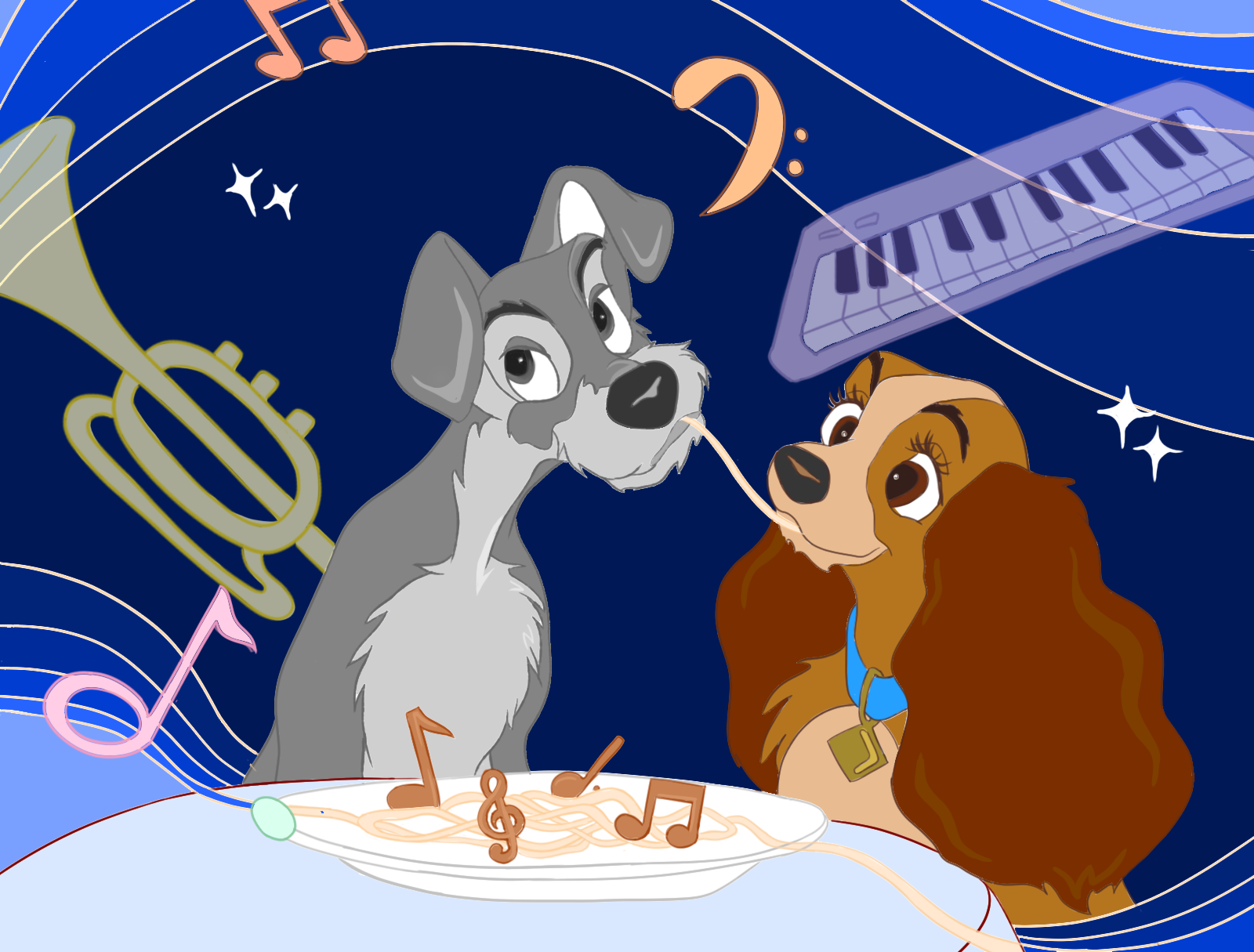‘Lady and the Tramp’ remake’s original music captures essences of each character

(Shari Wei/ Daily Bruin)
"Lady and the Tramp"
Directed by Charlie Bean
Disney+
Nov. 12
By Natalie Brown
Nov. 12, 2019 10:45 p.m.
Joseph Trapanese had to immerse audiences in the 1910s while also creating an original score for the live-action version of “Lady and the Tramp.”
Known for his work in “The Greatest Showman,” “Straight Outta Compton” and the “Divergent“ trilogy, Trapanese said his most recent project challenged him to develop a refreshing overall musical language for a new generation of moviegoers while staying loyal to the emphasis on an era that is integral to this new interpretation. With the movie set to premiere Tuesday on the new Disney+ streaming service, Trapanese said in his process to rejuvenate the retelling of the classic Disney film, he broke down the score into its simplest elements.
“I try to spend a lot of time finding the sound of the film,” Trapanese said. “I might accomplish that by writing a minute of music for different textures and sounds, bringing over some musicians to my studio to experiment and try to start with those little steps.”
[RELATED: Musical review: “The Little Mermaid Live!” smoothly mixes mediums to bring viewers under the sea]
After establishing the classical acoustic palate of the music, Trapanese said he plays around with notes and sequences on the piano keys in order to find a melody that works for him, constructing the major themes within the score. By thinking of the smaller notes, he said he can create key themes and melodies to carry the larger orchestra.
While both the original and new films are set in the 1910s, Trapanese chose to stray from the 1950s-sounding score of the original. He said his desire to start from scratch in this rendition allowed the film to have a flair of its own.
Staying true to the musical tastes of the 1910s, Trapanese said it was important to establish a sense of the era through music. When researching the musical stylings in America during this time period, Trapanese was drawn to traditional New Orleans music, such as that of Louis Armstrong. He said it was then a matter of working with local New Orleans musicians where he was able to build a foundation for the score.
In order for Trapanese to do his job efficiently, however, he said he had to collaborate with the film’s producer, Brigham Taylor, and director, Charlie Bean. Taylor said the development of the film’s final musical language resulted from the long hours spent philosophically discussing the film’s main themes, and how they can take shape in the score.
“We wanted to find music that fit into that time period that wasn’t completely beholden to that time, but was connected to it in a way through the instrumentation and through the style,” Taylor said.
[RELATED: Second Take: Streaming services will saturate already substantial market, overwhelming subscribers]
Creating personalized brands of music for both Lady and Tramp allowed them to accomplish these goals, Trapanese said. Because of Lady’s upbringing in an upper-class family, Trapanese said her theme is more refined and influenced by early American classical music. However, as a result of Tramp’s upbringing on the streets, his theme echoes freedom and improvisation similar to early traditional New Orleans jazz. Trapanese said it’s when these two characters meet that the score begins to morph.
“When they meet and when they go out, their music starts to influence one another,” Trapanese said. “You’ll hear Lady’s theme start to take on some more jazz characteristics, and you’ll hear Tramp’s theme, but with a more classical sensibility, so the music starts to intertwine.”
But Trapanese said his own brand of composing extends far beyond the technicality of the piece. Inspired by Trapanese’s style, orchestra musician Andrew Synowiec said Trapanese’s commitment to conveying raw emotions through the score also travels to the musicians performing his compositions, who are encouraged to bring their individual personalities into the music. Having worked with Trapanese extensively throughout the process, Synowiec said Trapanese’s success isn’t only found in the score but in the performance he is able to tease out of the orchestra.
“A lot of times in film music, it’s all about perfection, everything has to be squeaky clean, but this is kind of the opposite where (Trapanese) wanted to bring that emotion to it,” Synowiec said.
By crafting such emotionally poignant melodies, Synowiec said Trapanese’s ability to personify the sound enhanced the real emotions occurring throughout the film. Establishing a distinct musical voice for the film while still honoring the original film’s charm and beauty is something Trapanese said he is incredibly proud of.
“It feels like one emotional arc – one musical journey – and it’s something I’m really proud of,” Trapanese said. “We put a lot of energy into it, a lot of meetings, a lot of recording sessions, a lot of rewriting, a lot of revising and a lot of phone calls, but I’m really grateful for the result.”

